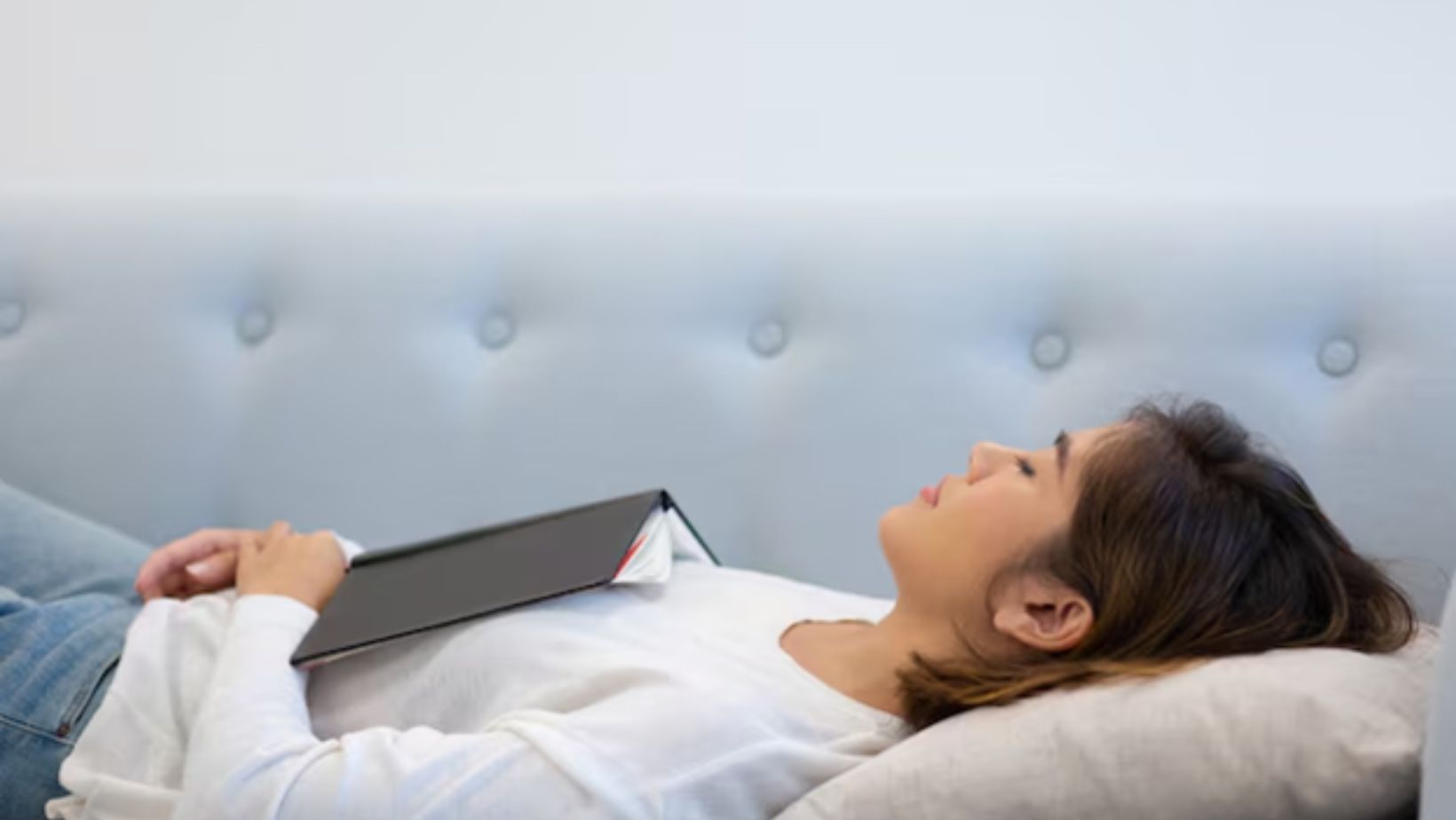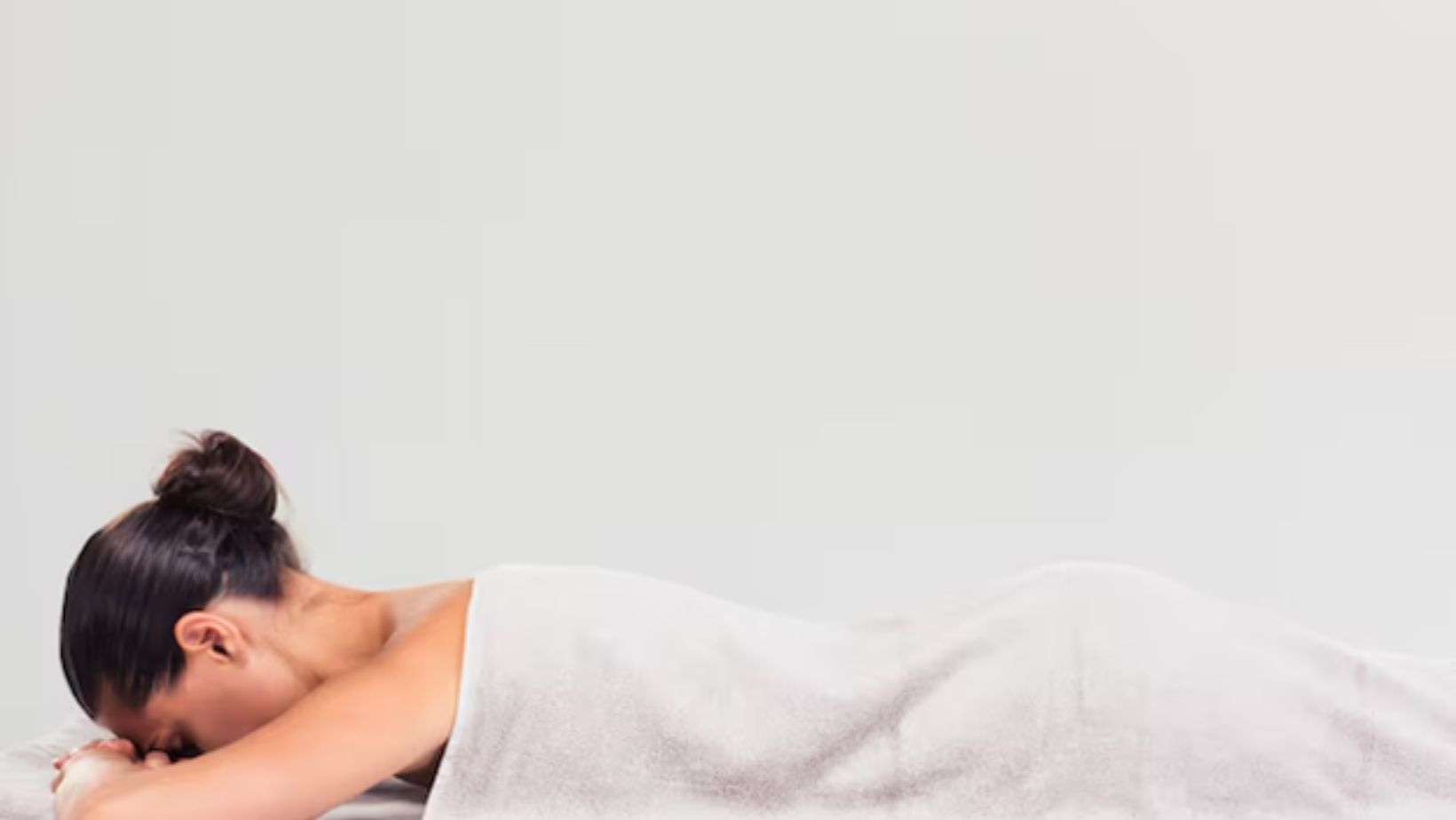Finding a healthier sleeping position can completely change the way you feel when you wake up. If you often experience back pain, neck stiffness, or restless nights, the position you sleep in might be the culprit.
But how do you train yourself to sleep differently, especially when you’ve been doing it the same way for years?
It’s easier than you might think – with a bit of awareness, consistency, and a few strategic steps, you can improve your sleep and overall well-being.
Read on to learn how to start training yourself for a better sleeping position that supports your body and helps you wake up refreshed.
Why Your Sleeping Position Matters
The position you sleep in affects more than just how comfortable you feel in bed. It can influence your spinal alignment, breathing, circulation, and even your digestion.

For example, sleeping on your back is often recommended for proper spinal alignment, while stomach sleeping can lead to neck and lower back pain due to the unnatural twist it creates.
Choosing the right sleeping position can relieve pressure on joints, reduce pain, and even improve conditions like snoring or acid relux. When you make small changes to the way you sleep, it can result in big changes to your health.
Here’s a table that shows the potential effects of different sleeping positions on your body:
| Sleeping Position | Potential Benefits | Potential Drawbacks |
| Back Sleeping | – Keeps spine aligned
– Reduces pressure on back and neck – Can prevent wrinkles |
– May increase snoring
– Can worsen sleep apnea |
| Side Sleeping | – Reduces snoring
– Alleviates acid reflux and heartburn – Good for lower back pain with pillow support |
– Can lead to shoulder pain
– May cause facial wrinkles due to pressure |
| Stomach Sleeping | – Can reduce snoring
– May feel more comfortable for some |
– Strained neck and spine
– Can cause lower back pain due to unnatural posture |
Step-by-Step Guide to Training Yourself to Sleep in a Healthier Position
Understand Your Current Sleeping Habits
Before making any changes, it’s important to know what your current sleeping habits are. Do you usually fall asleep on your side, back, or stomach? Take a few nights to observe how you naturally drift off and wake up. You can also use a sleep tracker or app to monitor your movements throughout the night.
Knowing where you start and how you typically move during sleep will help you identify which habits need changing. Awareness is key – it’s hard to train yourself to a healthier position if you don’t know what your current patterns are.
What are Sleeping Habits?
Sleeping habits are the regular behaviours and routines that influence the quality, duration, and consistency of your sleep. While sleeping position is a key focus, it’s important to consider your overall sleep habits, such as:
- When you go to bed and wake up
- Your pre-sleep routine
- How long you stay asleep
- Any interruptions during the night
Choose a Healthier Position
Based on your current habits, you can choose a healthier sleeping position that supports your body’s needs. Here are a few common positions and their benefits:
1. Back Sleeping
Back sleeping, also known as the supine position, involves lying flat on your back with your face upward. This position is considered one of the healthiest ways to sleep, as it allows your head, neck, and spine to rest in a neutral alignment.

With your body evenly distributed across the mattress, there’s less strain on your joints, making it a comfortable option for many people. Some even choose to enhance comfort by placing a pillow beneath their knees to reduce pressure on the lower back.
2. Side Sleeping
Side sleeping, one of the most popular sleep positions, involves lying on either side of body with your legs slightly bent. It often feels natural and comfortable for many people, as it allows the body to relax into the mattress with ease.

There are variations of side sleeping, such as:
| Variation | Description | Benefits | Drawbacks |
| Fetal Position | Lying on your side with knees pulled toward your chest. | – Feels cozy and secure
– Can reduce snoring and acid reflux – Great for pregnancy |
– May cause stiffness in joints and restrict deep breathing |
| Log Position | Lying on your side with legs extended straight and arms down | – Keeps spine in neutral alignment
– Can reduce acid reflux |
– May cause shoulder pressure and discomfort |
| Yearner Position | Lying on your side with legs straight and arms extended outward | – Supports spinal alignment
– May help reduce snoring |
– Can lead to shoulder strain due to arm positioning |
| Spooning Position | Common for couples, lying on your side with arms around partner | – Promotes intimacy and connection
– Offers comfort |
– May cause discomfort due to limited movement and body heat |
| Modified Side Position | Lying on your side with one leg bent at the knee, and the other extended | – Alleviates pressure on hips.
– Improves comfort |
– Less common, may require extra support from pillows |
3. Stomach Sleeping
Stomach sleeping is a less common sleeping position where you lie flat on your belly with your face turned to one side and your arms either tucked under the pillow or spread out to your sides.

While this position might feel comfortable initially, it has some drawbacks when it comes to overall health and comfort, such as:
- Neck and back pain. One of the most significant drawbacks of stomach sleeping is the strain it puts on your neck and back. The unnatural twisting of the neck to one side can cause stiffness, pain, or even lead to long-term issues like a herniated disc.
- Pressure on organs. The weight of your body pressing down on your stomach can exert pressure on internal organs, potentially leading to digestive discomfort, especially after eating a large meal before bed.
- Wrinkles and skin irritation. How do sleeping position affect your skin? You might ask. Sleeping with your face pressed against the pillow can contribute to premature wrinkles and even skin irrituation due to friction between the skin and the pillowcase.
Make Gradual Adjustments
Changing your sleeping position won’t happen overnight. It’s important to ease into it. Start by spending part of the night in your new position and gradually increase the time as you get more comfortable. If you wake up in your old position, don’t worry – just readjust and try again. It’s a process that requires patience and consistency.
A useful trick is to “train” yourself to fall asleep in the desired position. Over time, your body will begging to associate this new position with sleep, and it will become second nature.
Practice Relaxation Techniques Before Bed
The more relaxed you are before bed, the easier it will be to stay in your desired sleeping position. Try relaxation techniques, such as:
- Deep breathing. Focus on slow, deep breaths by inhaling through your nose and exhaling through your mouth. It reduces tension by lowering your heart rate and calming your nervous system.
- Progressive muscle relaxation (PMR). Starting from your toes and working up, tense each muscle group for a few seconds, then relax them. PMR helps reduce physical tension and promote overall relaxation.
- Guided Imagery. Visualize a peaceful scene or setting, like a beach or forest, using all your senses to help shift focus from stress to calm, making it easier to relax.
- Meditation. Practicing mindfulness or simple meditation can help calm the mind. By focusing on your breath or a mantra, you quiet racing thoughts and create mental space for relaxation.

Shuteye is a comprehensive sleep and meditation app that enhances well-being by combining restful sleep with meditation. It offers guided meditations tailored to your needs, sleep stories that ease you into a meditative state, and calming soundscapes or white noise to create a peaceful environment.
Some of its key features include:
- Guided Meditations: Tailored sessions for stress relief and focus.
- Sleep Stories: Relaxing narratives to ease into meditation.
- Soundscapes & White Noise: Calming audio for a serene environment.
- Sleep Tracking: Insights into how meditation affects sleep quality.
- Personalized Recommendations: Custom routines based on your data.
- User-Friendly Interface: Easy navigation for a focused meditation experience.
Be Consistent with Your Routine
Consistency is crucial when training yourself to sleep in a healthier position.
It means going to bed at the same time each night, ensuring your bedroom is conducive to good sleep, and sticking to your chosen sleeping position as much as possible. The more consistent you are, the quicker your body will adapt.
You might notice results within a few days, or it could take a few weeks, depending on how deeply ingrained your current habits are.
Conclusion
Training yourself to sleep in a healthier position can have a great impact on your well-being – from reducing aches and pains to improving the quality of your sleep. Understanding your current habits, make gradual adjustments, and staying consistent lets you successfully transition to a better sleeping position.
While the process might take some time, the long-term benefits of improved sleep and overall health make it worth the effort.
So, give it a try – your body will thank you for it!
FAQs
1. How long does it take to adjust to a new sleeping position?
It varies from person to person. For some, it may take a few nights, while others may need several weeks to fully adapt to a new sleeping position.
2. Can changing my sleeping position cause temporary discomfort?
Yes, it’s common to experience some initial discomfort or stiffness when switching positions, but this should improve as your body adjusts.
3. Is there a best sleeping position for people with back pain?
Sleeping on your back with a pillow under your knees on your side with a pillow between your legs is often recommended for relieving back pain.
4. How can I stop myself from returning to my old sleeping position during the night?
Using pillows or rolled-up towels to support your new position can help prevent your from unconsciously returning to your old sleeping habits.

